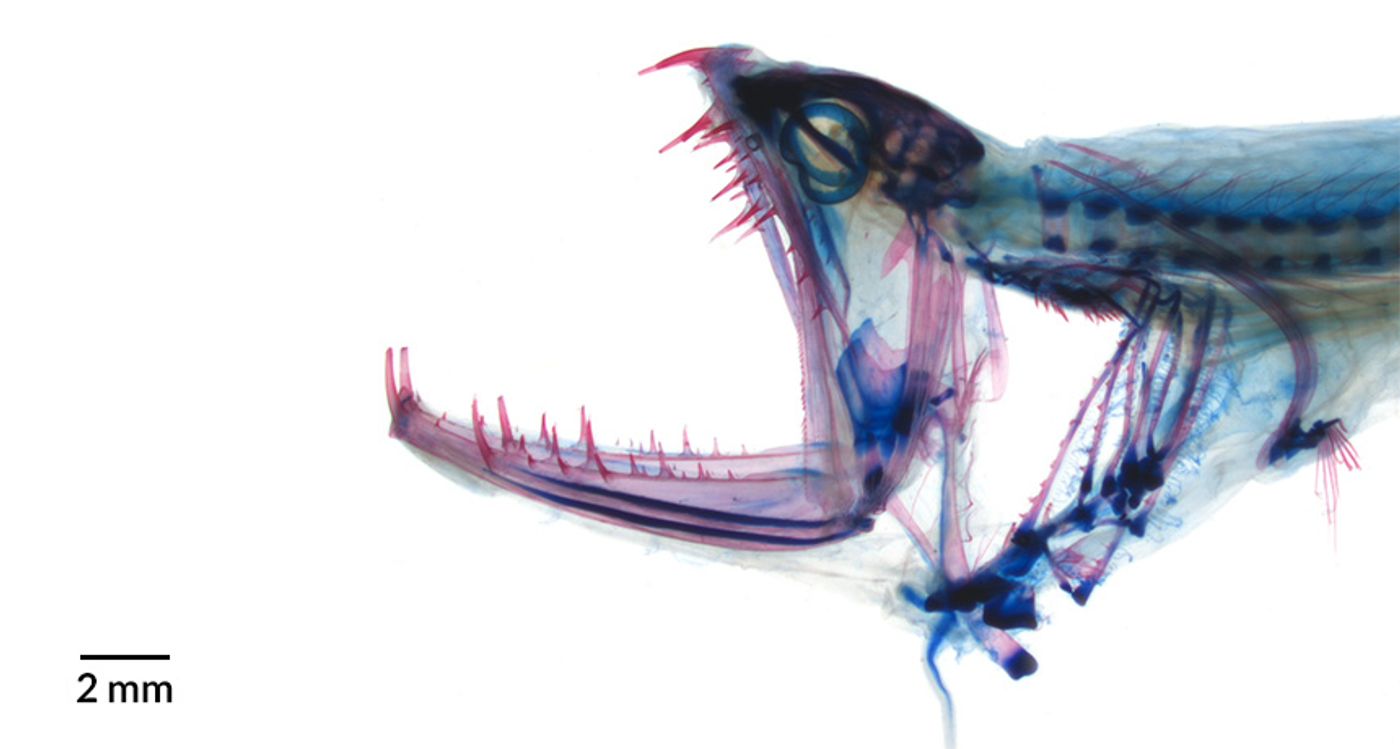Why Are Dragonfish Able to Open Their Mouths So Wide?
Deep below the surface of the ocean, some 650-3,000 feet below, you might find one of nature’s terrifying predatory fish dubbed the dragonfish. These things look like eels with freaky heads and clamp-like jaws, but their mouths are very different than most species of fish, as X-ray images would reveal.
These deep-dwelling fish are able to extend their jaws to the extreme, allowing for consumption of prey that would normally be too large for the narrow predator to snack on. While their ability has long alluded biologists, new research into their mouth mechanisms may hold the answer.
Image Credit: Nalani Schnell, Muséum national d’Histoire naturelle
Published in the journal PLOS ONE, the study notes how the dragonfish has a special kind of joint that attaches their jaw to their head, which allows for overextension of the jaw bone and lets the mouth open at incredible angles. What’s more is this is the first time such a joint has ever been documented in a fish species, so it’s a pretty interesting find.
The video below shows how the joint works:
There are at least five groups of the dragonfish that exhibit this feature, so it’s not just one in particular. That said, this could be more common among deeper-dwelling fish than we know. Then again, we don’t have a lot of research hours with the deepest part of the ocean, seeing as how they’re so difficult to get to.
"The arsenal of specialized traits that barbeled dragonfishes have evolved as deep-sea predators—huge mouths with dagger-like teeth, distensible stomachs, snake like, black bodies with light producing organs and elaborate chin barbels with bioluminescent tissue—make them ferocious and voracious ambush predators, thus the name dragonfishes," said Smithsonian scientist and study co-author Dave Johnson.
"We suspect that the head joint adaptation helps these fishes engulf their prey items, since the added flexibility allows them to open their mouths up to 120 degrees wide—an angle that is unmatched in any other group of fishes."
It’s clear that these fish are predatory by looking at their inward-facing barbed teeth, which are designed to trap and shred prey, making hunting easier. These kinds of teeth aren’t likely to exist in fish that are more commonly preyed on.
Combined with these fascinatingly over-extendable jaws, dragonfish appear to have evolved to eat a certain way, which is why this joint finding is particularly interesting. This could shed more light into the mystery of how these kinds of deep-sea fish hunt and survive, as well as tell the story of how they evolved.
Source: Smithsonian









